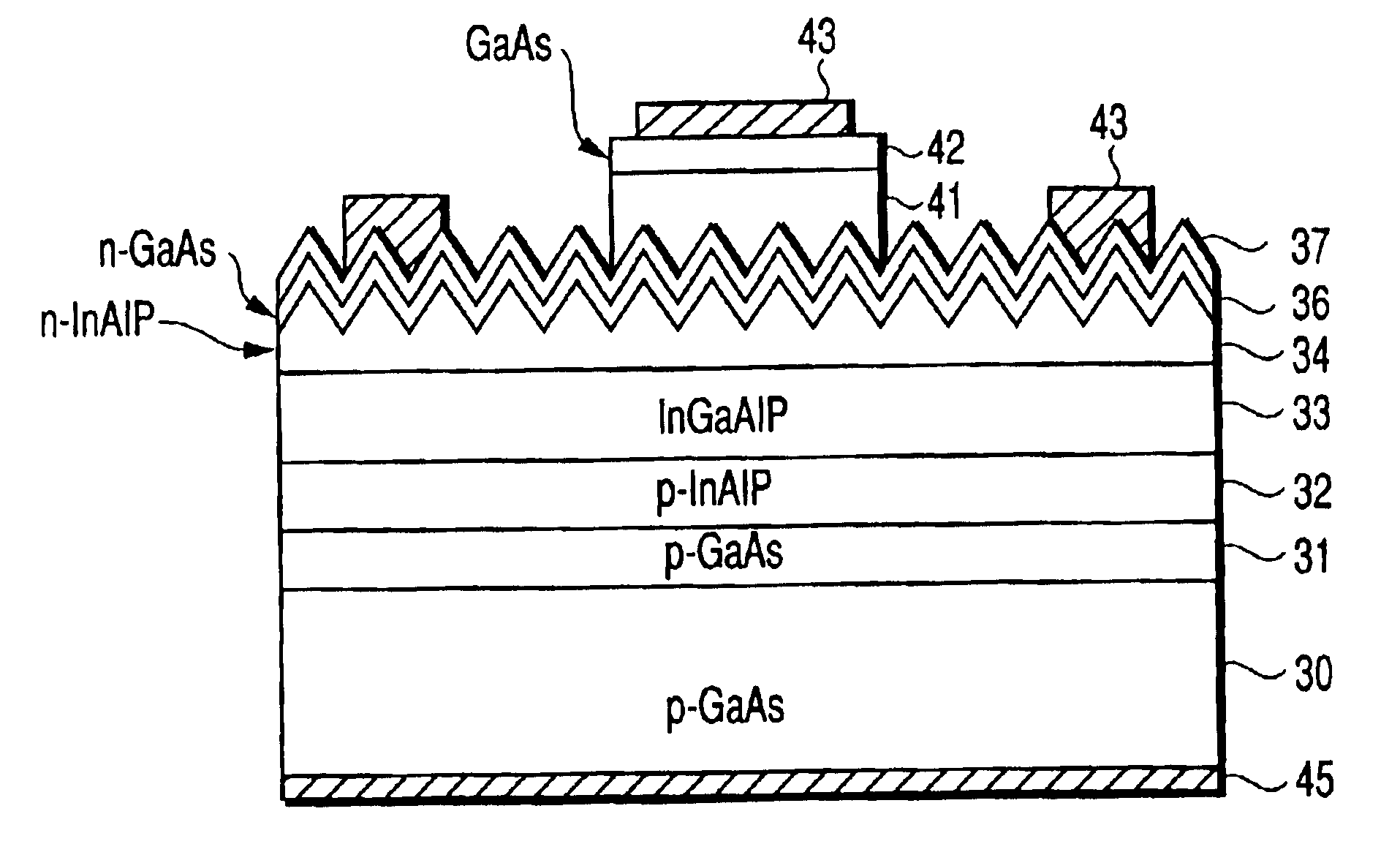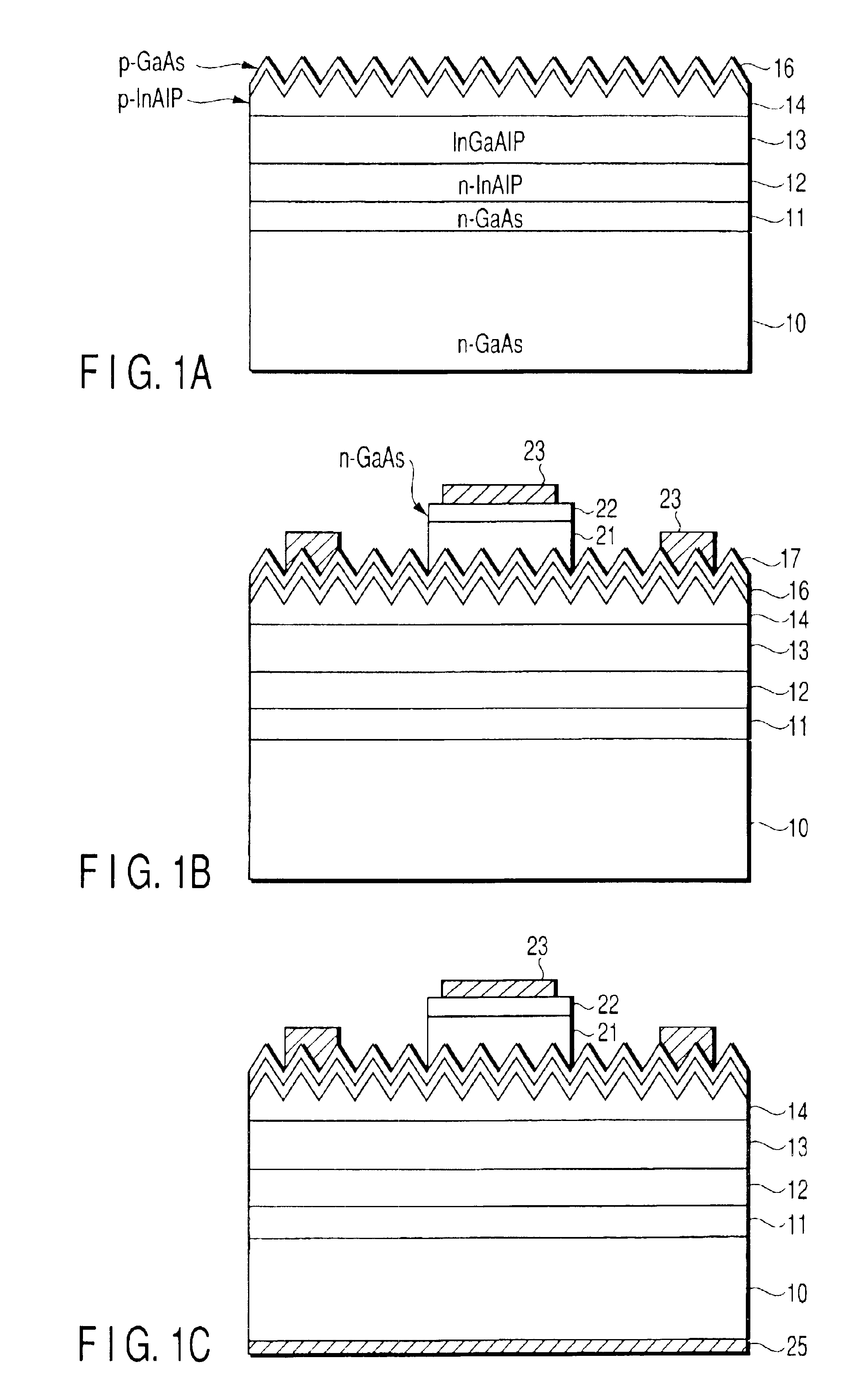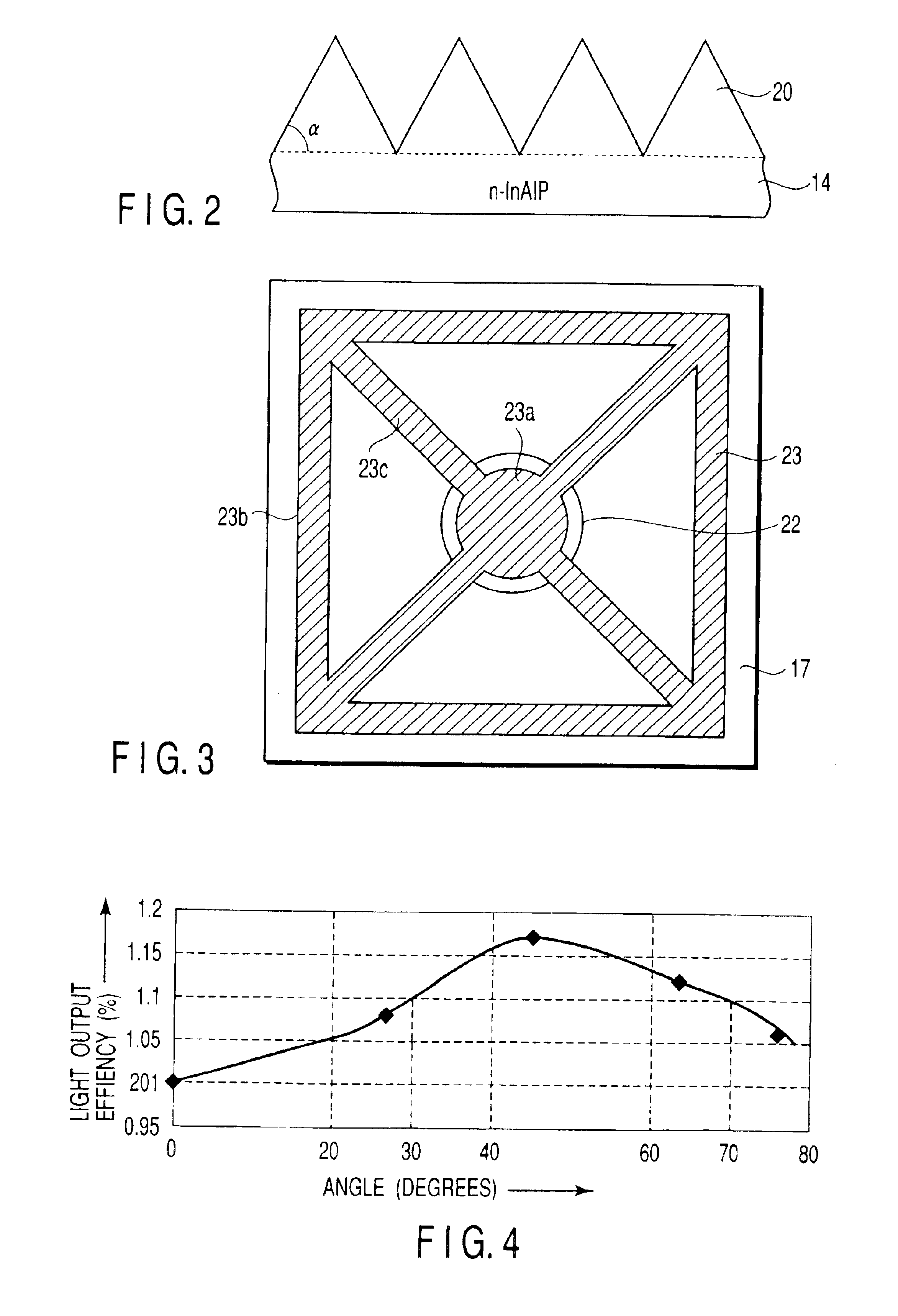Surface-emitting semiconductor light device
a semiconductor light and surface-emitting technology, applied in the direction of semiconductor devices, basic electric elements, electrical equipment, etc., can solve the problems of low light output efficiency, low efficiency of increase, and low efficiency of light outpu
- Summary
- Abstract
- Description
- Claims
- Application Information
AI Technical Summary
Benefits of technology
Problems solved by technology
Method used
Image
Examples
first embodiment
[0028]FIGS. 1A, 1B and 1C are cross-sectional views, in the order of steps of manufacture, of a green LED according to the present invention.
[0029]First, as shown in FIG. 1A, onto an n-type GaAs substrate 10 of 250 μm in thickness, an n-type GaAs buffer layer 11 of 0.5 μm in thickness is grown by means of metal-organic CVD (MOCVD) using AsH3 as a group V element source gas. After that, by means of MOCVD using PH3 as a group V element source gas and under conditions of a PH3 partial pressure of 200 Pa and a total pressure of 5×103 Pa, an n-type In0.5Al0.5P cladding layer 12 of 0.6 μm in thickness and an undoped In0.5(Ga0.55Al0.45)0.5P active layer 13 of 1.0 μm in thickness are grown in sequence.
[0030]Subsequently, a p-type In0.5Al0.5P cladding layer 14 of 1.0 μm in thickness is grown by means of MOCVD with the PH3 partial pressure reduced to 10 Pa and the total pressure kept at 5×103 Pa. After that, a p-type GaAs contact layer 16 of 0.1 μm in thickness is grown by means of MOCVD usin...
second embodiment
[0043][Second Embodiment]
[0044]Referring now to FIG. 5, there is illustrated, in sectional view, the structure of a green LED according to a second embodiment of the present invention.
[0045]In the second embodiment, each of grown layers is opposite in conductivity type to a corresponding one of the grown layers in the first embodiment and the basic structure and the method of manufacture of the LED remain unchanged from those of the first embodiment.
[0046]Onto a p-type GaAs substrate 30 are sequentially grown by means of MOCVD a p-type GaAs buffer layer 31 of 0.5 μm in thickness, a p-type In0.5Al0.5P cladding layer 32 of 0.6 μm in thickness, an undoped InGaAlP active layer 33 of 1.0 μm in thickness, an n-type In0.5Al0.5P cladding layer 34 of 1.0 μm in thickness, and an n-type GaAs contact layer 36 of 0.1 μm in thickness. A transparent ITO film 37 is then formed on the contact layer 36 by means of sputtering techniques.
[0047]As in the first embodiment, in growing the n-type InAlP cla...
third embodiment
[0050][Third Embodiment]
[0051]FIGS. 6A and 6B are sectional views, in the order of steps of manufacture, of a green LED according to a third embodiment of the present invention.
[0052]First, as shown in FIG. 6A, onto an n-type GaAs substrate 50 of 250 μm in thickness are sequentially grown by means of MOCVD an n-type In0.5Al0.5P cladding layer 12 of 0.6 μm in thickness, an undoped In0.5(Ga0.55Al0.45)0.5P active layer 53 of 1.0 μm in thickness, a p-type In0.5Al0.5P cladding layer 54 of 1.0 μm in thickness, an n-type InGaP current diffusing layer 55 of 3.0 μm in thickness, and a p-type GaAs contact layer 56 of 0.1 μm in thickness. For epitaxial growth of these layers, the MOCVD techniques are used as in the first embodiment.
[0053]Next, an annealing step is performed at a temperature equal to or higher than the epitaxial temperature (not lower than 600° C.) in order to change the epitaxial surface topography. Thereby, the surface of the current diffusing layer 55 becomes roughened to fo...
PUM
 Login to View More
Login to View More Abstract
Description
Claims
Application Information
 Login to View More
Login to View More - R&D
- Intellectual Property
- Life Sciences
- Materials
- Tech Scout
- Unparalleled Data Quality
- Higher Quality Content
- 60% Fewer Hallucinations
Browse by: Latest US Patents, China's latest patents, Technical Efficacy Thesaurus, Application Domain, Technology Topic, Popular Technical Reports.
© 2025 PatSnap. All rights reserved.Legal|Privacy policy|Modern Slavery Act Transparency Statement|Sitemap|About US| Contact US: help@patsnap.com



